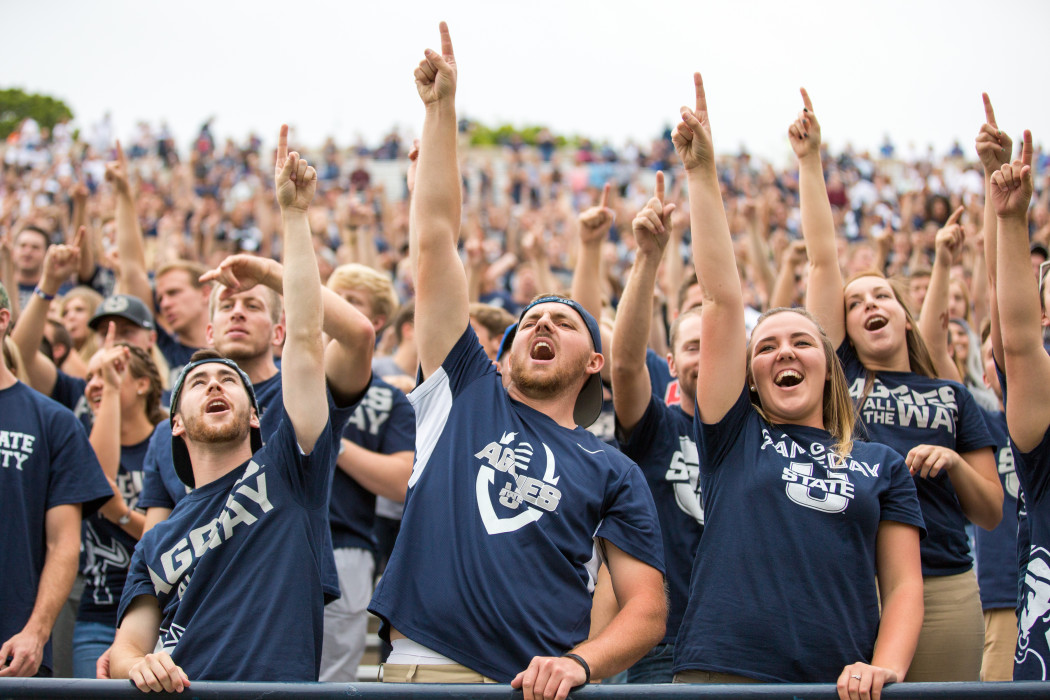What do sports mean to the students of USU?
In 2006, The Atlantic listed its top 100 most influential people in American history. Two of those 100 were athletes — baseball legends Babe Ruth (75th) and Jackie Robinson (35th). Yes, two men who made their living hitting a ball with a stick are some of the most influential people in the history of America.
Like many places throughout the nation, Utah State University has its own wonderful sporting culture. For some, their lives revolve around sports both local and national. Others remain indifferent to the entire sports landscape.
The effect of sports on the Cache Valley community is much more complicated than simply rooting for the local teams. Sporting events are social events as much as they are contests of athletic prowess. Though many die-hard fans of a sport may attend for the sheer excitement these events bring, many people go simply because of the lively social environment.
Many Utah State students agree that, if not for their friends attending games with them, they’d opt out of live sporting events.
“Just the energy,” said Nicholas, another Aggie fan. “You’re with a bunch of people that you know usually. The closer you are to the game, the more in it you feel. And also just being loud and a bit rowdy.”
Sporting events are quite unique regarding social makeup. There are plenty of occasions that will draw large crowds — concerts, political rallies, the Howl — but sports have a different feel to them. In what other event can you have two opposing crowds in the same place, cheering on a competition happening right in front of them?
Even in the realm of sports, NCAA sporting events have an added crowd dimension — the student section. This section is entirely unique in terms of crowds and even across sports, as it only appears in NCAA sporting events. Being in the student section is of itself is something students look forward to.
“It’s pretty awesome,” said Chad Clay, a former USU student. “I really like the student section at the football stadium.”
From stadium-wide interactions such as the kiss cam to dances and crowds chants, people at games receive ample opportunity to interact with each other. One student, Draper, said that he acts much more rowdy at games partly due to feeling “unbeatable.”
Some argue that invincible crowd mentality doesn’t always end well. Caitlin Howell expressed her dislike of some of the cheers.
“Some of the cheers are rude,” she said, “I like respecting everyone.”
Though some may object to the chants, cheers, and jeers Aggie crowds cook up, many feel like that is the best part. Utah State is known for having one of the best home-court advantages in college basketball thanks in part to the crowd and its choreographed cheers. The most well-known among these is the “I believe that we will win” chant, performed before the start of each game and the infamous “scoreboard” chant, proudly done each time the Aggies come away with a victory. The Scotsman plays at least three times per game, complete with coordinated arm motions.
For some people, the outcome of the game isn’t important to have a good time.
“As long as the games not a blowout,” said Andrew Sims, a Utah State graduate student. “If my team is winning or it’s close, interesting and exciting. If it’s a good match between teams and I’m invested in some of the players and know them, or they are up-and-coming, I like to pay attention to them.”

